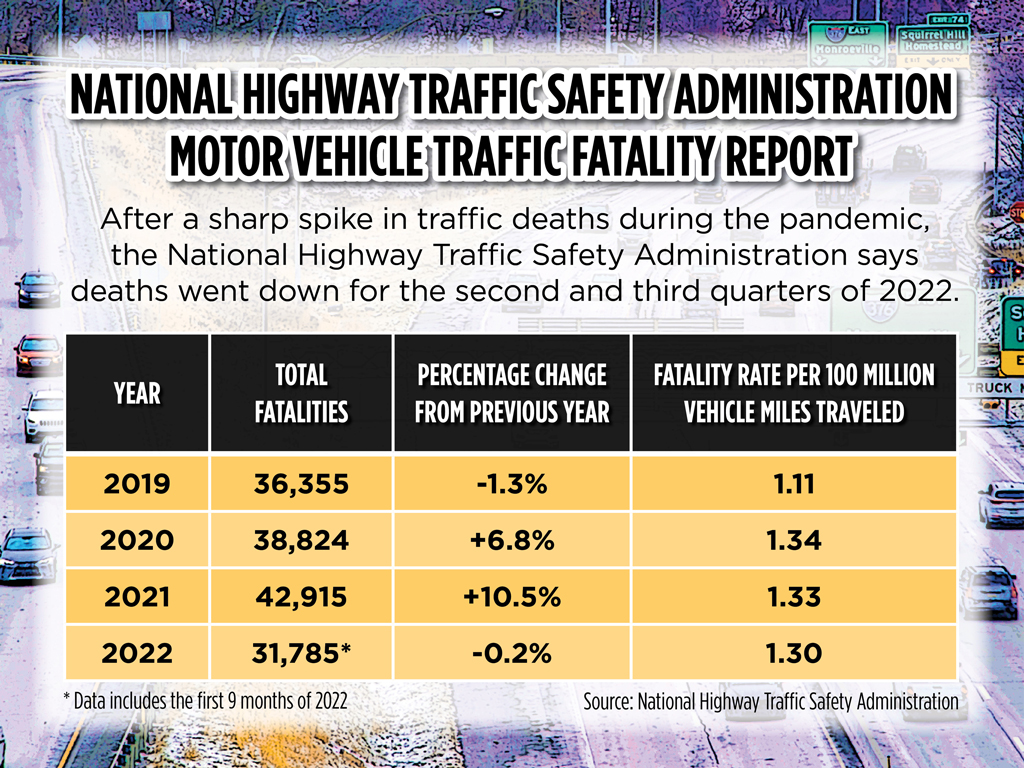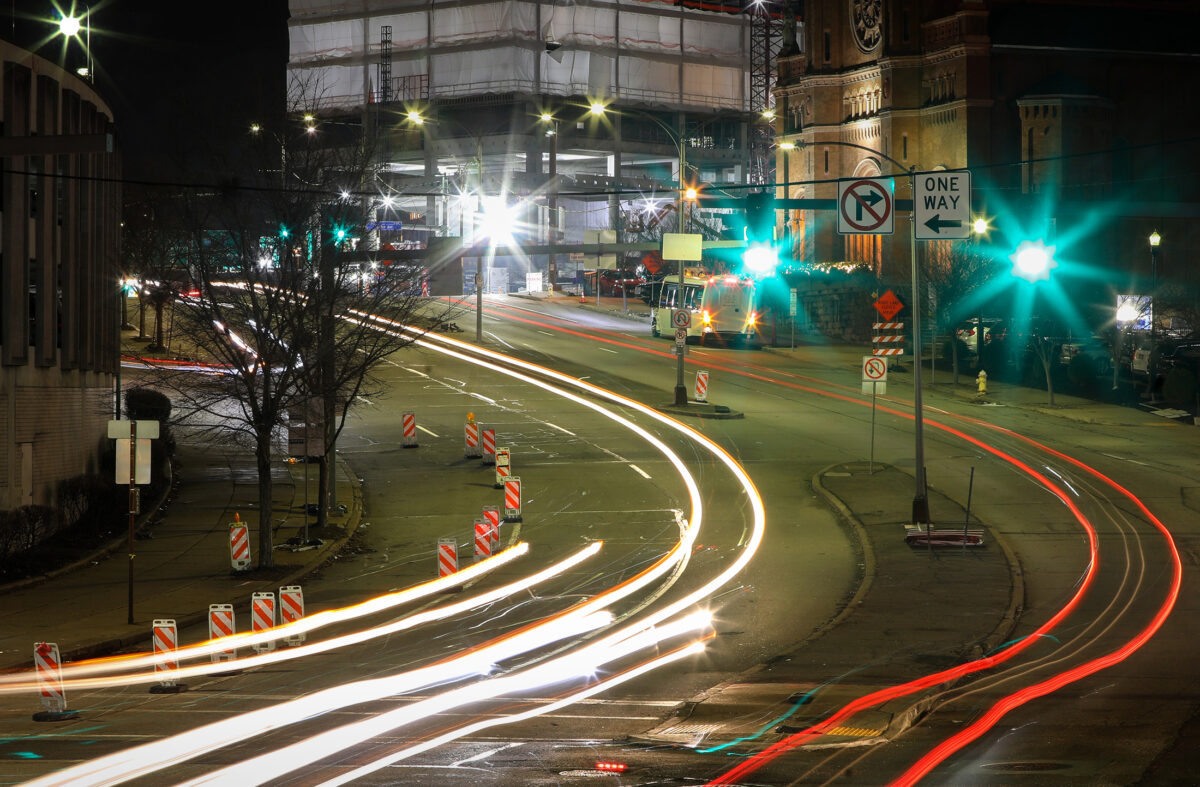For the first time since traffic deaths spiked after the pandemic began, there could be a downward trend emerging.
Preliminary figures released Monday by the National Highway Traffic Safety Administration showed deaths declined for the third quarter of 2022, which would be the second quarterly decline in a row. Traffic deaths had soared unexpectedly from the start of COVID-19 restrictions in early 2020 through June 2022, when more people died on the nation’s highways despite substantially reduced driving.

Deaths in the third quarter of 2022 were estimated at 11,690, a decrease of 0.8% from the third quarter of 2021 and a 0.2% decrease through the first nine months of 2022. In the second quarter, deaths dropped 5.8% to 10,490.
The rate of deaths per 100 million miles driven dropped to 1.30 through September, a slight drop from 1.31 for 2021. For comparison, the death rate per 100 million miles driven was 1.11 before the pandemic in 2019.
Jonathan Adkins, executive director of the Governors Highway Safety Association, called the improvement “a small step forward.”
“A reduction in roadway fatalities is welcome, but the 0.2% decline announced by NHTSA follows an unprecedented two-year surge in roadway deaths and dangerous driving,” he said in a news release. “Coupled with that is a continued rise in bicyclist and pedestrian deaths, underscoring the urgent need to ensure that road users not in vehicles enjoy the same protections as drivers and their passengers.”
Adkins and other highway safety experts attributed the sharp increase in traffic deaths during the pandemic to drivers engaging in more dangerous activities while there were fewer vehicles on the roadways. Increases in speeding, drug- and alcohol-impaired driving and distracted driving combined with a reduced use of seat belts to cause increases in deaths and serious injuries in traffic accidents.
Just about a year ago, U.S. Transportation Secretary Pete Buttigieg kicked off a multipronged campaign to cut traffic deaths by reducing dangerous behavior through education, improving the design of roads to reduce accidents, and cutting the response time and improving the capabilities of emergency responders. Safety campaigns have started, but the other improvements are works in progress.
“Fatalities have not increased for two quarters now, but we have far more work to do to save lives and address the crisis on our nation’s roadways,” Ann Carlson, NHTSA’s acting administrator, said in a news release. “That means investing in safety, implementing strategies that work and embracing the safe system approach outlined in the department’s National Roadway Safety Strategy.”
In the first six months last year, deaths decreased by 10% for children under 16 years old, 10% on urban collector and local roads, 9% in vehicle rollover crashes, 8% for people ages 16 to 24, 7% in people ejected from vehicles, 7% among unbelted people and 2% in speed-related accidents.
Categories that saw increases in deaths were rural interstates, 12%; large trucks, 10%; cyclists, 8%; motorcyclists, 5%; and pedestrians, 2%.
The statistics also showed differences across the country, with four regions showing increases, five declines and one having no change. The biggest increase of 5% was in the northeast region (Rhode Island, Massachesetts, Vermont, New Hampshire and Maine) while the largest decline of 5% was in the region that includes New Mexico, Texas, Oklahoma, Louisiana and Mississippi.
Pennsylvania showed a 1% increase in deaths to 897 through the first nine months of 2022 while the death rate per 100 million miles driven remained the same at 1.23.
Ed covers transportation at the Pittsburgh Post-Gazette, but he's currently on strike. Email him at eblazina@unionprogress.com.



